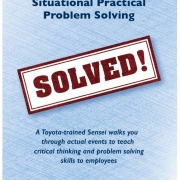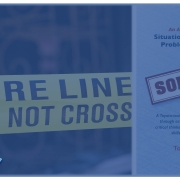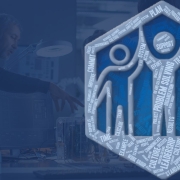Situational Practical Problem Solving FAQ
Below are some frequently asked questions about Tom Adair’s Situational Practical Problem Solving methodology and training. Let us know what you think by dropping a comment in the comments section at the bottom of the page.
-
How does SPPS differ from other problem solving methodologies?
There are several ways SPPS sets itself apart from other types of problem solving. Using SPPS allows you to react quickly to problems, make quick decisions and adapt to whatever situations arise. Once learned, practitioners of SPPS can quickly change mental gears, home in on the best ways to solve problems and save time. Generally, other methods are slower to react, take longer to make a decision, are less flexible and spend more time in solving problems.
SPPS questions everything by challenging the status quo, assumptions, claims and experience as factual. You spend more time asking questions rather than giving others the answer. This allows and supports subordinates to solve their own problems. The problem solver does not have to know all the answers, just the questions to ask; SPPS teaches you how to do that. This is different from other methodologies that question some things while accepting people’s claims and experience as fact.
SPPS demands you set aside preconceived notions and previous experiences with the problem, and verify your impressions with facts. You cannot depend on your memory and you are encouraged to go see first-hand the problem. Other methodologies generally accept preconceived ideas, memory and experience with the problem without verifying facts.
SPPS separates facts from assumptions to more accurately solve problems. It addresses the root cause and not the symptoms. It is based on verifiable data. Root cause analysis is done at the site of the problem and not in meeting rooms. Other problem solving methods often address symptoms and miss the real root cause.
SPPS does not depend on forms and paperwork. It emphasizes solving the problem and then filling out the paperwork, if needed. Other methods frequently focus on paperwork and laborious use of problem report formats.
-
Is there a specific reporting form for SPPS?
No. The SPPS problem solver is encouraged to put the answers in a form that best suits them and/or their organization. In the SPPS class we show you how to put the answers in a power point template. Also, we show you how to insert the information in other types of problems solving forms such as PDCA, DMAIC, CAPA, 8D, and A3 forms. The beauty of SPPS is that it is completely customizable to the organization.
-
Are these methods easy for anyone to learn?
Yes, these methods are very easy to understand and remember. Tom Adair taught these methods to elementary school children from grades 1-12 in the Scott County School System in Kentucky where the Toyota plant is located. The results were amazing. Also Tom, currently teaches SPPS to first year college students at two different colleges in Huntsville, Alabama. Employees in various organizations find SPPS appealing, and see it as a common sense practical approach to problem solving.
-
We are an ISO14001 facility. How will this affect our compliance?
SPPS will enhance the compliance of ISO14001 by addressing the real root cause of problems and not their symptoms. This type of problem solving method is very effective. SPPS was initially taught to the US Air Force to permanently address environmental concerns. The Air Force environmental base inspection team kept having the same environmental discrepancies reoccur on their yearly base inspections. After implementing SPPS these discrepancies were finally resolved and never reappeared.
-
We are also an ISO 9001 facility. How will this affect our compliance?
This is similar to the question about ISO14001. After implementing SPPS methods quality departments have reported significant results. They have found employees using critical thinking, questioning techniques, and operating with validated facts to solve problems that keep reoccurring on a regular basis. Tom worked with a pharmaceutical manufacturing company to turn around the way its quality department addressed problems. After conducting an SPPS pilot, management recommended the entire quality department take the training, and the results were remarkable.
-
Everyone in our organization seems to solve problems differently. What does SPPS do to address that?
This is not unusual. SPPS is based on the scientific method with sequential steps to follow. How SPPS separates itself from other problem solving methods is through teaching critical thinking and Socratic questioning. The steps are similar to other methodologies. The SPPS class addresses this issue by showing similarities and differences with the most popular problem solving methodologies to eliminate confusion. This better coordinates the different types of problem solving.
-
We want to train people in our organization to do SPPS, but we are a small business with limited training funds. What are the ways in which we can do that?
One way is to buy the SPPS book “SOLVED!” and study it. The other way is to have on site classes or to come to a major city which is having the class. Some professional organizations will sponsor a class and invite its members to the class. This later method is cost effective as some companies are restricted by their budget and find sending their employees to a class with participants from similar interests a better choice.
Another way is to invite Tom Adair to come to the organization and work on actual problems with the individual teams. This is the most effective way to learn problem solving. He recently spent six months consulting full time with a major power utility company. The company had eight teams working on different problems. Tom was able to help the teams with just-in-time advice as it was needed. In the downtime Tom taught SPPS classes to the remainder of the employees. The results were significant.
-
How should our people prepare prior to attending an SPPS workshop?
The best suggestion is to read the book prior to the workshop. Another way is to read Tom’s blogs on the TSD website (leanCPI.com). The organization will be interviewed by the instructor prior to the workshop to identify any concerns or questions about the workshop. These concerns and questions will be addressed and sent to the organization’s sponsor
-
After a workshop, what should I do to encourage our people to use SPPS?
The instructor will address this issue throughout the workshop. The instructor will also meet with management and other concerned individuals to work out a game plan to encourage your people to use SPPS.
It is suggested upper management attend the workshop first to understand SPPS. The instructor will emphasize to them throughout the class what their role is, how to engage the workforce, how to modify their culture and increase people’s capabilities. Management will be taught how to move in the direction of becoming teachers, coaches, and facilitators with problem solving.








 2019 Total Systems Development
2019 Total Systems Development